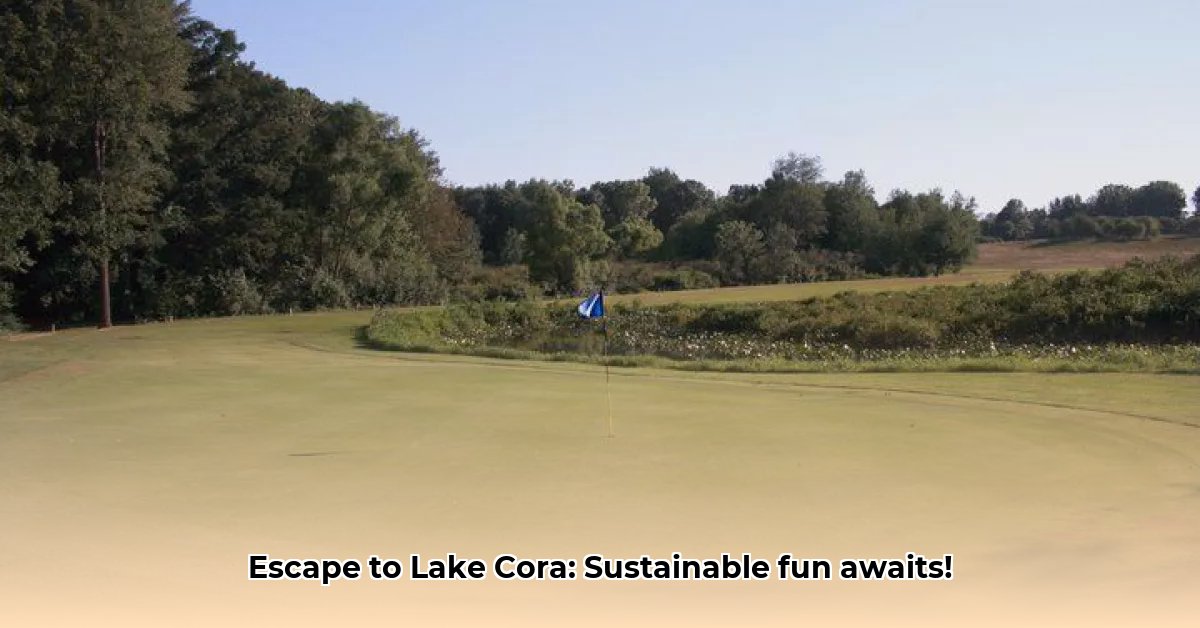
Lake Cora, nestled in the heart of Paw Paw, Michigan, presents a captivating paradox: a stunning natural resource teeming with recreational opportunities, yet facing the ever-present challenge of balancing vibrant community life with environmental preservation. This picturesque lake, with its shimmering waters and lush green fairways of the Lake Cora Hills Golf Club, is a beloved community asset, a source of both pride and concern. Its future hinges on a delicate dance between progress and preservation – a story of shared responsibility, where the decisions made today will shape the generations to come.
Lake Cora Paw Paw MI: A Community Balancing Act
The beauty of Lake Cora is undeniable. Its sparkling surface reflects the vibrant community life that surrounds it; families enjoy picnics on its sandy shores, boaters glide across its waters, and golfers tee off on the meticulously maintained fairways of the Lake Cora Hills Golf Club. Yet, this idyllic setting faces critical questions: How can we ensure the continued vitality of this ecosystem? How can we support local businesses while protecting the very asset that draws them here? The answer lies in a collaborative effort, a shared commitment to responsible stewardship.
Did you know that Lake Cora's ecosystem supports a diverse array of wildlife? The Lake Cora Corporation, the primary steward of the lake, recognizes that the health of the lake is intrinsically linked to the health of the community. They are actively working to develop and implement strategies that protect this invaluable resource. This commitment extends beyond mere conservation; it's about ensuring the long-term sustainability of the lake for the benefit of all. The Lake Cora Hills Golf Club, a significant contributor to the local economy, recognizes its role in this shared responsibility, actively integrating environmentally conscious practices into its operations.
"Our goal isn't just to maintain a profitable business; it's to be responsible stewards of this precious natural resource," says Sarah Miller, General Manager, Lake Cora Hills Golf Club. "We believe that sustainability and economic vitality are not mutually exclusive; they are complementary goals that can be achieved through conscious choices and collaboration with the community."
This holistic approach involves several key strategies:
Enhanced Monitoring: Regular water quality testing and wildlife surveys provide crucial data, allowing for early detection and swift mitigation of potential environmental threats. This proactive approach ensures that problems are addressed before they escalate.
Sustainable Golf Course Management: The golf club is progressively adopting eco-friendly practices, focusing on water conservation through advanced irrigation techniques, reducing pesticide use, and implementing sustainable land management strategies. This shows a commitment beyond words to sustainable practices.
Community Engagement: The Lake Cora Corporation actively encourages resident participation through volunteer clean-up days, educational initiatives, and community forums, fostering a collective sense of responsibility for the lake's preservation.
Planning for a Sustainable Future: Collaboration and Shared Vision
The long-term sustainability of Lake Cora demands a unified vision, shared by the Lake Cora Corporation, the golf club, residents, and local government. This collaboration is crucial in navigating the complexities of balancing recreational use with ecological preservation. The following table outlines the short-term and long-term goals of key stakeholders:
| Stakeholder | Short-Term Goal (0-1 year) | Long-Term Goal (3-5 years) |
|---|---|---|
| Lake Cora Corporation | Implement a robust water quality monitoring system. | Develop and implement a holistic lake restoration strategy, including habitat improvements. |
| Lake Cora Hills Golf Club | Upgrade to advanced water-saving irrigation technology. | Partner with environmental groups for nature education and conservation projects. |
| Residents | Increase participation in lake cleanups and community events. | Active involvement in shaping decisions that impact Lake Cora. |
| Local Government | Secure funding for crucial environmental protection initiatives. | Establish zoning regulations protecting the lake’s sensitive ecological areas. |
Proactive Risk Management: Addressing Potential Challenges
Despite the collaborative efforts, potential risks remain. Understanding and proactively addressing these challenges is paramount. The following table outlines potential risks, their likelihood, impact, and planned mitigation:
| Risk Factor | Likelihood | Impact | Mitigation Strategy |
|---|---|---|---|
| Water quality degradation | Medium | High | Strengthened monitoring, stricter pollution regulations, improved waste management systems |
| Reduced community involvement | Medium | Medium | Increased outreach efforts, engaging community programs, and transparent communication |
| Conflicts between recreation and conservation | Low | Medium | Develop comprehensive management plans that balance both recreation and conservation |
| Funding shortages | Medium | Medium | Diversify funding sources: grants, sponsorships, community fundraising |
Addressing these challenges requires open communication, shared responsibility, and a collective commitment to the long-term health of Lake Cora.
Key Takeaways: Preserving Paradise
Lake Cora’s story is a testament to the power of community collaboration. By integrating sustainable practices, fostering community engagement, and proactively addressing potential challenges, Paw Paw can ensure that Lake Cora remains a vibrant hub of recreational activity while safeguarding its remarkable natural beauty for generations to come. The future of Lake Cora is not just about the lake itself; it's about the community that cherishes it.